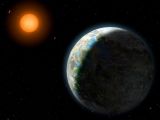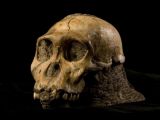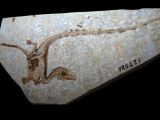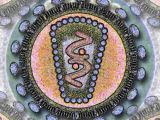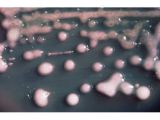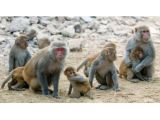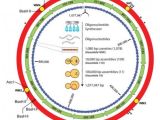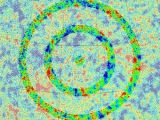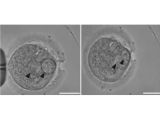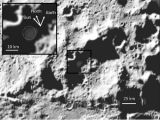2010 was a year full of amazing discoveries and whether they were in the field of medicine, human behavior, ancient history or space exploration, they gave people confidence in science so here is a top ten of the most interesting breakthroughs, with a bit of help from Wired Science.
A Habitable Exoplanet – Maybe a Second Earth
In September, astronomers discovered an extrasolar planet that could support liquid water, since it was orbiting its dim star's habitable zone (between the too-hot and too-cold regions), which meant that it could also possibly support life.
The enthusiasm of exoplanet hunters dropped when a second team announced that they could not find it in their data, but even so, the idea that other habitable worlds will one day be discovered, gives hope for 2011's space findings.
Australopithecus sediba
This fascinating creature that could be a direct ancestor to humans or simply look like one, gives insight into our evolution.
Reported in April and known from two 1.9-million-year-old skeletons discovered in a South African cave, the Australopithecus sediba has some characteristics that are very much human – like long arms and a protruding nose.
But other features, like the extra-long forearms and flexible feet, date from deeper in the primate past.
Dinosaur Colors
This year, for the first time ever, scientists were able to tell the colors of a dinosaur from direct fossil evidence.
Thanks to preserved traces of pigment structures in cells coming from fossilized dinosaur feathers, paleontologists were able to compare the dinosaur cells with those of living birds.
This way, they were able to recreate the coloring of a recently discovered feathered dinosaur – Anchiornis huxleyi, which probably had bright orange feathers on its head and speckled on its throat, a gray body and white accents on its wings.
The same technique was then used to determine the color of a giant fossil penguin.
HIV Microbicide Discovered
This year was very productive, since it seems that we finally have an HIV drug that works.
A study involving 889 women from South Africa, tested the efficiency of the antiretroviral microbicide tenofovir, and concluded that the women who were using it were 39 percent less likely to contract HIV.
Moreover, women who used it most often reached a 54% drop in risk of infection, and even though this is not a 100% efficient vaccine, the two and a half years of trial brought hope of finally slowing down the spreading of HIV and AIDS.
NDM-1 Superbug Decoded
The NDM-1, or New Delhi metallo-beta-lactamase is the latest multidrug-resistant superbug.
It isn't a single microorganism, but rather an enzyme that can chew through most antibiotics, and only two classes of drugs seem capable of fighting the infections, if at all.
This year, scientists managed to trace its origins to southern Asia, and also found that the gene coding for NDM-1 can ride in a plasmid, or self-contained snippet of DNA, and it has no difficulties in spreading from one infectious microbe to another, even if unrelated.
Rhesus Macaques Looked in the Mirror
Did you know that until September 2010, only humans, chimpanzees, dolphins and elephants could recognize themselves in a mirror?
For decades rhesus macaque monkeys failed this test, and we considered the species as being on a lower cognitive scale, but three months ago, University of Wisconsin neuroscientists reported mirror self-recognition in their macaques.
The experiment needs to be replicated, but still, maybe humans underestimated the monkeys' intelligence, or maybe the mirror test simply shows that we don't understand animals at all.
Creation of Self-Replicating Life With Synthetic DNA
In May, bioengineers at the J. Craig Venter Institute created the first self-replicating, synthetically designed life, after considering genetic code as software.
They 46 researchers created a genome entirely on computers, and then they printed the DNA in pieces and allowed them to self-assemble in a yeast cell.
A few hours later, they witnessed an organism 'boot up'.
The scientists hope to patent their Mycoplasma laboratorium, and engineer it to manufacture cheap biofuels, medicines and other useful compounds.
The Universe Recycles
After analyzing the leftover radiation from the Big Bang it seems that the universe was recycled over and over again.
In November, two theoretical physicists claimed that the circular patterns in the otherwise uniform cosmic microwave background, suggest that the universe we know, could be just one in a series of cycles of births and deaths.
If the circles in the microwave background are the gravitational echoes of super massive black holes colliding in the epoch before the most recent Big Bang, then this means that there has been more than one Big Bang.
The other theory says that the circles could simply be noise, but the only thing that will settle this, is the next map of the universe, produced by the Planck satellite.
Three-Parent Embryos
British researchers took chromosomes from one zygote and put them into a zygote with no chromosomes but still containing mitochondria, and obtained an embryo with genetic contributions from three parents.
This is the first time that this technique is used in sophisticated human cells, and even though it has not yet been approved for human reproduction, it might be used to prevent hereditary, often-fatal mitochondrial disease.
Water on the Moon
Last year, NASA sent a Centaur rocket into a shadowed lunar crater and found the first signs that the moon is full of water.
Technically, the LCROSS (Lunar Crater Observation and Sensing Satellite) mission sent back the first samples of water at the end of 2009, but the final numbers weren't in until October.
This crater, near the Moon's South Pole, contained 154 kg (341 pounds) of water, and almost 5.6% of the soils there could be moist.
Also, in March, a radar instrument on India's Chandrayaan-I orbiter found millions of tons of water at the North Pole, too.
After all this, we are eager to see what 2011 brings our way.Happy New Year to all you scientists out there!
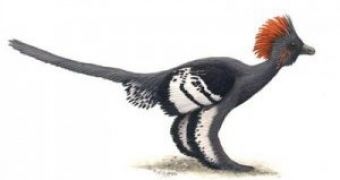
 14 DAY TRIAL //
14 DAY TRIAL // 
